History of Medicine: medicine of the extinct archaic cultures. Medicine in Mesopotamia
Today I continue with this series of posts that I have dedicated to the history of medicine (beginning of the series here), continuing with the study of "archaic cultures".
We call "archaic cultures" those that departed from the superior forms of primitive culture and that initiated history, that is, they initiated the stage that we can reconstruct through written documents.
There were many archaic cultures, but we will try to divide them into two groups: those that after having reached a great development and splendor were completely extinguished, like the Sumerians, Assyrians, the inhabitants of Babylon, Egypt and ancient Iran and those who have lasted until today as China, ancient India, Israel, Japan and groups of pre-Columbian America. In this post I am going to tell you about the history of medicine corresponding to extinct archaic cultures, starting with Mesopotamian medicine
MEDICINE IN MESOPOTAMIA: SUMER-ASSYRIA-BABYLON
Mesopotamia, a geographical area that lies between the Tigris and Euphrates rivers, has been the scene of several extinct cultures: the Sumerian, the Akkadian, the Assyrian, the Babylonian. The first Sumerian cities appear around the year 4,000 B.C. and from there, they reach a development over three and a half millennia, until the Babylonian empire is destroyed by the Persians around 539 B.C. (It was mostly located in what today corresponds to Iraq).
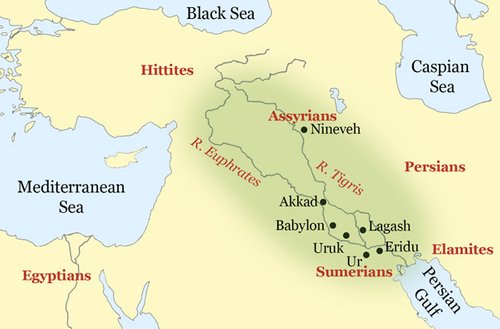
Mesopotamia was the seat of extraordinary civilizations and a cultural center of great importance. The oldest written medical sources come from Mesopotamia (clay tablets engraved with a stylus), written in cuneiform script. The oldest one dates from the third millennium and contains 15 medical prescriptions.
In 1902 a single, four-ton slab of diorite was found in Susa, measuring 7.5 ft of tall, engraved in cuneiform script and which is now in the Louvre Museum: The Code of Hammurabi. Drafted with a great legal technique, it is no more than a compilation of laws and administrative regulations collected by the Babylonian king Hammurabi (who reigned between 1792 - 1750 B.C. according to the average chronology). It regulates among other things the exercise of medicine (it establishes the responsibilities that practicing physicians have, their fees, as well as the punishments imposed for malpractice). As an example of its articles we will cite the following:
If a doctor has treated the serious injury of a man with a metallic knife and caused his death, his hands will be cut off.
If a doctor has treated a serious wound of a noble man and healed him, he must receive 10 shekels.
If a doctor treated a free man, he receive 5 shekels.
If he cures a slave, his owner must pay the doctor 2 shekels.
If a doctor has killed a slave of a commoner, he must provide a new slave.
In 1.841 the library of Ashurbanipal in Nineveh was discovered and in 1.974 the library of the Royal Palace of Ebla, finding more than 30,000 clay tablets. In many of them he described the conception of health and disease, as well as the techniques employed by healing priests.
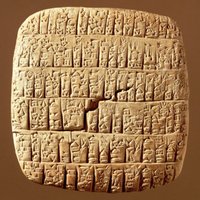
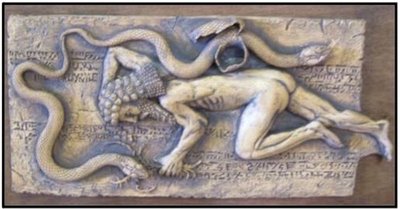
Source of the image of the right
An interesting detail is since Mesopotamia the snake has been used as a medical symbol. It has its origin in the Sumerian legend of King Gilgamesh, hero of many legends, one of whom tells that he plunged into the sea to take the plant of eternal youth and that on his return a snake steals it and swallows it, rejuvenating and curing diseases.
In Mesopotamia medicine was a sacred art, learned in the temple of God Marduk (used as a medical school) and only practiced by three categories of priests: the Baru, the diviner, who was responsible for making the diagnosis, determining its cause and establish a prognosis (difficult task because it should identify which of the approximately 6,000 possible demons was the cause of the disease), the Ashipu, which was the one that exorcised the demons of the disease and the Asu, who was the practical doctor, who administered the medications or intervening operating. They could be helped by the Gallulu or barbers or by the Mushenigtu or midwife (but these were not on a par with the doctors and were of lower caste). The priest or doctor was the most learned personality in the city, invested with all authority, knew how to read and write and knew about science, literature, religion. For the diagnosis of the disease, these priests used:
The interrogation (rather an examination of the patient's conscience), which included several questions to determine the origin of the disease, such as: Have you lied? Have you cheated on the weight of the scale? Have you antagonized the father against the son? Or the son against the father?
Divination, using fire (empiromancy), dust, dreams (oniromancy), astrology (they knew the relation between the movements of the stars and the appearance of certain epidemic diseases), the flight of the birds , the interpretation of the figures that projected the oil in the water or the direction of the incense smoke. They used the examination of the liver or viscera of sacrificed animals (figure of the liver as the source of life).
The medical auguries, derived from the inspection of the expression of the patient, of the urine, of the blood of the bleeding.
The therapeutic conception was based on the belief that all phenomena were subordinated to the will of the gods (divine punishment) and curses produced by demons and interceded before them to achieve healing (theurgic character of medicine), attributing it to the medicament magical properties. They were used up to 250 varieties of medicinal plants (among the most common cassia, myrrh, asafoetida, opium, oregano, thyme, among the trees are willow, pear, pine and fig) and substances of animal origin (milk , snake skin and shell of the turtle) and mineral (salt and potassium nitrate). They used heat, massage, fumigation, medicinal baths, wound healing, abscess drainage, phlebotomies, dental extractions and surgical interventions such as fracture treatment, amputations and cataract extraction.
During the healing process the gods were invoked through prayers, sacrifices were paid to them, all with the purpose of ingratiating the patient with the deity and allowing their healing. In other cases exorcisms were practiced to rid the patient of the demon that owns it.
We are going to mention some of the gods and demons related to health in Mesopotamia. The goddess Ea was the goddess of wisdom and medicine, the goddess Gula of births, Nin-Azu was a particularly important god because he was known as "the lord of medicine". But the true healer was the god Ningizida, represented as a serpent with two heads (the one who stole the plant of eternal life from Gilgamesh). As for the negative gods and demons, god Tin was responsible for the headaches and Namtaru of throat disorders, Gallú was the demon of insomnia, Axaxazu the demon of jaundice, the god of fever and pestilence it was Nergal but the most damaging was "the Seventh Spirit", very noxious and aggressive, that reigned on days divisible by 7 (that's why doctors did not heal in those days).
Doctors in Mesopotamia recorded the existence of diseases of the eyes and ears, skin and venereal diseases, jaundice, respiratory and cardiac disorders, tumors and arthritis. Advanced in public health built districts to separate lepers. They also advanced in the field of occupational medicine (justified absences at work due to illness)
Medications were administered through suppositories, enemas, or through the urethra. Pills, powders and syrups were also used. The potions were prepared at night, to be taken the next morning fasting. They also used plasters and ointments.
Another curious fact, the first known name of a doctor is Edinmungi, mentioned in a Babylonian seal of alabaster (more than 4,000 years old), which is in the Louvre Museum. It is believed that with this seal documents and recipes were signed. The seal has represented two knives surrounded by medicinal plants. Hence, it is said that the medical prescription appears for the first time in Mesopotamia.
The most important thing without a doubt is that these civilizations with their engraving on tablets built an excellent medical file, without counting the rest of the contributions of this culture as the invention of the cuneiform writing, the plow, the roller, the screw, the pulley, the wedge, the lever, the inclined plane, the straight line, the blowing of the glass and the ceramic, the sexagesimal system, divided the circumference into 360 °, the division of the year into 12 months, of the week into 7 days and of the hour in 60 minutes. They also codified the first laws, developed trade, arithmetic, astronomy, astrology, music, engineering and architecture (with works that regulated the course of rivers and construction of large towers), wrote literary works such as The Poem of Creation and The Poem of Gilgames, in short, were civilizations with innumerable contributions to humanity, thus establishing his legacy.
References:
- http://www.cervantesvirtual.com/obra/historia-de-la-medicina/
- http://www.arabworldbooks.com/articles8.htm
- https://www.britannica.com/topic/history-of-medicine
- https://es.wikipedia.org/wiki/Historia_de_la_medicina
- http://www.monografias.com/trabajos63/historia-medicina/historia-medicina2.shtml
- http://www.cardenashistoriamedicina.net/
- http://diagnostico-x.blogspot.com/2010/03/la-medicina-en-mesopotamia.html

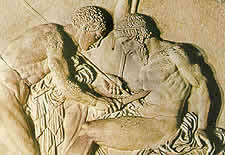
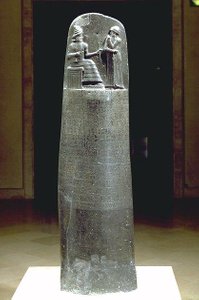
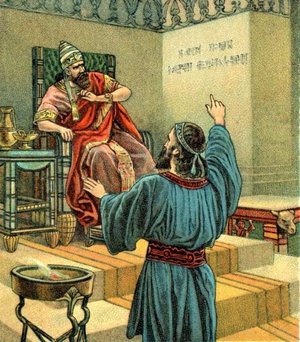
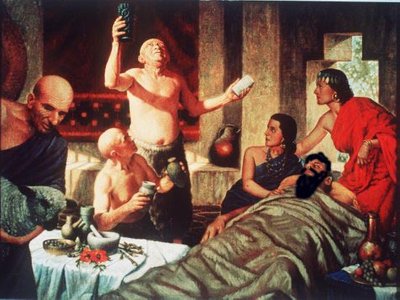
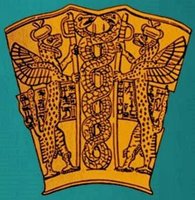
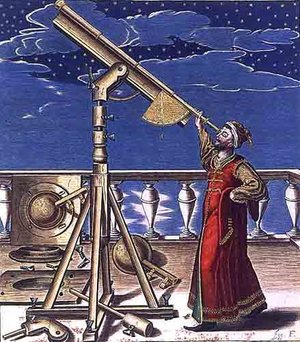
You received a 10.0% upvote since you are not yet a member of geopolis and wrote in the category of "archeology".
To read more about us and what we do, click here.
https://steemit.com/geopolis/@geopolis/geopolis-the-community-for-global-sciences-update-4
What a pride!!! to be worthy of your recognition, thank you very much
Congratulations! This post has been upvoted from the communal account, @minnowsupport, by eleyda78 from the Minnow Support Project. It's a witness project run by aggroed, ausbitbank, teamsteem, theprophet0, someguy123, neoxian, followbtcnews, and netuoso. The goal is to help Steemit grow by supporting Minnows. Please find us at the Peace, Abundance, and Liberty Network (PALnet) Discord Channel. It's a completely public and open space to all members of the Steemit community who voluntarily choose to be there.
If you would like to delegate to the Minnow Support Project you can do so by clicking on the following links: 50SP, 100SP, 250SP, 500SP, 1000SP, 5000SP.
Be sure to leave at least 50SP undelegated on your account.